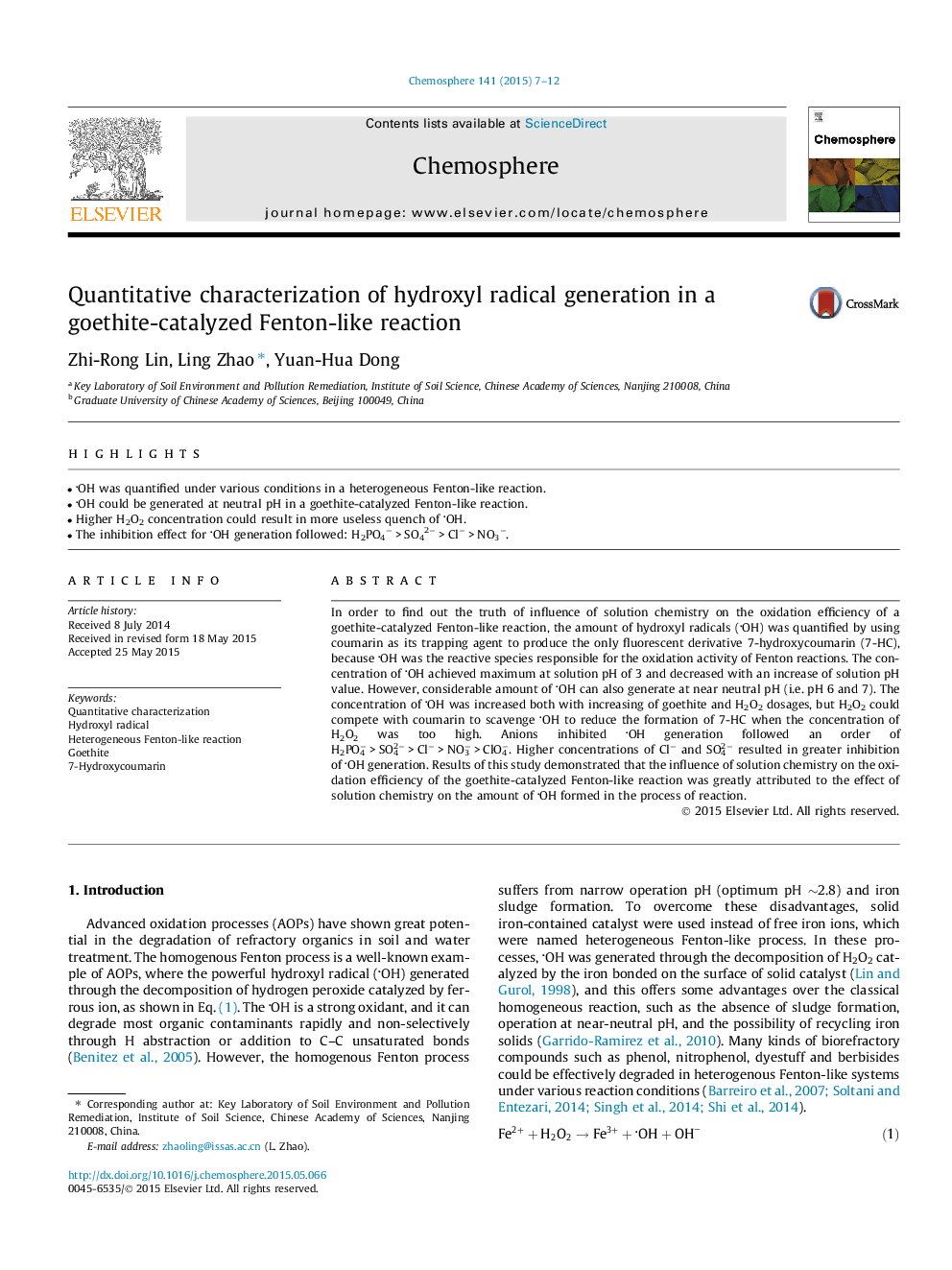| Article ID | Journal | Published Year | Pages | File Type |
|---|---|---|---|---|
| 6307321 | Chemosphere | 2015 | 6 Pages |
Abstract
In order to find out the truth of influence of solution chemistry on the oxidation efficiency of a goethite-catalyzed Fenton-like reaction, the amount of hydroxyl radicals (OH) was quantified by using coumarin as its trapping agent to produce the only fluorescent derivative 7-hydroxycoumarin (7-HC), because OH was the reactive species responsible for the oxidation activity of Fenton reactions. The concentration of OH achieved maximum at solution pH of 3 and decreased with an increase of solution pH value. However, considerable amount of OH can also generate at near neutral pH (i.e. pH 6 and 7). The concentration of OH was increased both with increasing of goethite and H2O2 dosages, but H2O2 could compete with coumarin to scavenge OH to reduce the formation of 7-HC when the concentration of H2O2 was too high. Anions inhibited OH generation followed an order of H2PO4â > SO42â > Clâ > NO3â > ClO4â. Higher concentrations of Clâ and SO42â resulted in greater inhibition of OH generation. Results of this study demonstrated that the influence of solution chemistry on the oxidation efficiency of the goethite-catalyzed Fenton-like reaction was greatly attributed to the effect of solution chemistry on the amount of OH formed in the process of reaction.
Keywords
Related Topics
Life Sciences
Environmental Science
Environmental Chemistry
Authors
Zhi-Rong Lin, Ling Zhao, Yuan-Hua Dong,
